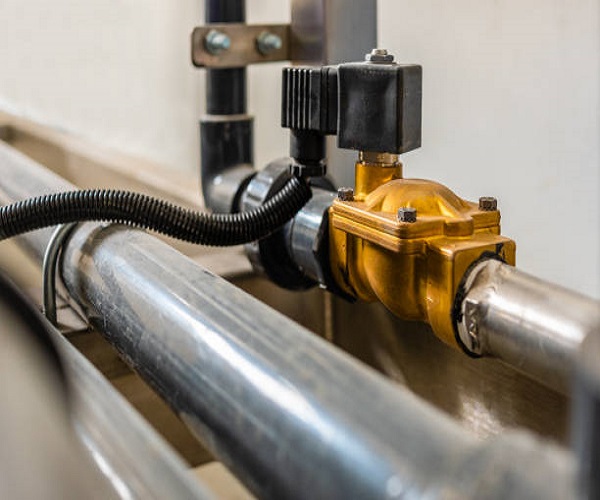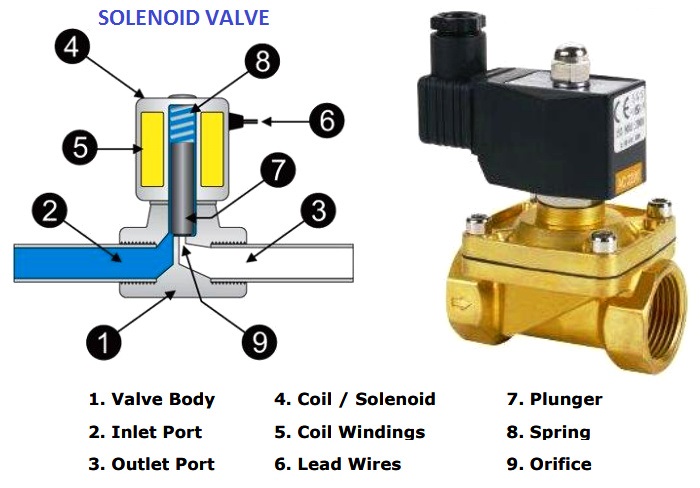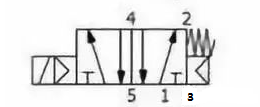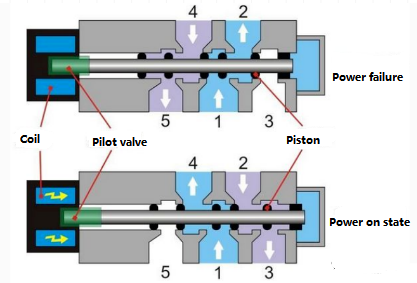
The solenoid valve is an industrial pneumatic component that we often use. It drives the cylinder back and forth, thus driving the mechanism’s movement to achieve the function we want. Unfortunately, the frequency of failure of this component is also relatively high. How to determine and troubleshoot these problems is a skill we electrical workers must master.
Of course, the function of the solenoid valve is not only to control gas. It can also contain water, oil, and other media with pressure. And according to its function, the solenoid valve also has different models. Depending on the principle of operation, we need to determine whether it is a pilot or a straight through. According to the other design appearance, it can also be divided into two kinds of base and integrated type. Nowadays, solenoid valves are also developing towards centralized intelligence. We will introduce these to you later. This time we mainly explain the work of the solenoid valve failure judgment and solutions.

How can we solve the problem that the solenoid valve does not switch and the cylinder does not move in the field maintenance?
Solution:
First of all, to determine whether there is a power supply.
General solenoid valve rated voltage for AC 220v or DC 24v. Then use DC power to drive the solenoid valve when the positive and negative poles should be connected to the right if the wrong inside power indicator will not light. If the different voltage levels are connected wrong, this will lead to light-emitting diodes being burned, thus seriously burning the coil.
Measure the power supply if the power supply is regular, indicating that there is no problem with the control line. The problem is in the solenoid valve and cylinder.
The next step is to measure the resistance value of the coil.
We need to first measure it on/off with a multimeter. If the resistance value is close to zero or infinity, the coil is short-circuited or disconnected. If the measured coil resistance within the normal range (solenoid valve models are different, their normal coil resistance value is different. There are dozens of Europe, and there are also hundreds of Europe. If you are not sure how much its normal resistance, you can let it and next to other solenoid valves of the same type to compare the resistance), and the power has a magnetic, then you can judge whether the coil is good.
And at this point, we can determine the problem in the solenoid valve spool or cylinder.
As some factories provide compressed gas containing moisture and many other impurities, resulting in pneumatic triplet did not play the ideal effect. After a long work period, the solenoid valve will inevitably be impurities stuck.
The solenoid valve is stuck and not generally converted due to internal dirt and jamming.
At this point, we can first press the manual button of the solenoid valve. After pressing it, it will toggle the spool (the main spool of the direct-acting solenoid valve, the pilot spool of the pilot valve) to achieve the same effect as the solenoid valve coil energized to toggle the spool. Experiment with the solenoid valve card or not. If stuck, we can clean the solenoid valve cavity body and the solenoid valve spool. If the spool is badly broken and there are other problems, we can replace the spool or solenoid valve.
Finally, we then power up the solenoid valve to test whether it is repaired or not.
If the solenoid valve is internal tampering, how to determine whether it is the solenoid valve tampering or cylinder tampering?
Solution:
Let’s start with a brief explanation of how they work. We begin with a two-position five-way solenoid valve as an example. The two bits are the two positions of its spool. Five-way means that there are five ports on the solenoid valve. They are an inlet hole 1, two outlet holes 2 and 4, and two exhaust holes 3 and 5.
The working principle of the solenoid valve is that when in the starting state, 1, 2 into the air, at this time 4, 5 exhaust. When the coil is energized, the static iron core generates electromagnetic force, which causes the pilot valve to act. Compressed air enters the valve pilot piston through the air circuit to make the piston start. In the middle of the piston, the round sealing surface opens the channel, making 1 and 4 air inlets and 2 and 3 exhausts. When the power is cut, the pilot valve is reset under the action of the spring and returns to its original state. Solenoid valve air is because the inside of the spool seal is not sealed, resulting in 4 and 2 out of the two holes gas out. So the phenomenon of solenoid valve gas is because the cylinder can not reach the position or can not move.
The working principle of the cylinder is much simpler. We use the double-action cylinder as an example to introduce. Both sides of the cylinder piston receive the solenoid valve 2 and 4 holes to provide pressure to achieve forward or backward action. When both sides of the piston alternately have compressed air from 1, 4 into and 2, 3 discharge or 2, 3 into 1, 4 discharge, the piston to two directions of movement. We can control the movement speed in both directions by adjusting the air pressure.
Generally, we choose to adjust the speed by exhausting the air. The cylinder comprises a cylinder barrel, end cap, piston, piston rod, and sealing ring. Generally, the cylinder appears to be tampering with air because the seal in the cylinder is damaged. The left and right cavities interfere with each other resulting in no pressure on the piston. If 1, 4 into the cylinder is directly from 2, 3 discharge, we can always feel the gas out at 3. Cylinder seal intact is the case of gas from 1, 4 into the cylinder left cavity, the left and the right two-cavity seal does not tamper with the gas, push the piston will be the right side of the gas from 2, 3 out of the cylinder. Its failure phenomenon and solenoid valve tampering are very similar. The difference is that if the solenoid valve is tampering with gas is because 4, 2 out of the hole at the same time out of gas. If the cylinder is fouled, there is always air coming out of the cylinder.


It is also worth noting that some of our solenoid valves with a base need to check the base seal. The seal will also be aging for a long time. The aging of the seal will lead to solenoid valve leakage and air leakage. In addition, some solenoid valve end caps are connected to the regulator; sometimes, the regulator is closed or blocked. It will also lead to the solenoid valve not being able to discharge air with no action. Solenoid valve head armature, spring, and some other mechanical components of the movement will also be damaged if used for a long time.






